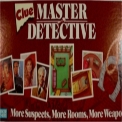Tuesday, December 22: Surprise Witness
While taking a rest from trying to crack our Christmas Contest, you may find the following account (naturally provided by our resident research librarian, Rob Lopresti) concerning cracking safes amusing. It’s from a 19th century American journal dedicated to the building trade. The illustration comes from an issue a couple of years before the article was printed, but it gives a good sense of the magazine. The two figures depicted, by the way, are holding the two primary symbols of Freemasonry, the square and compass, and the figure on the right is wearing a Mason’s apron—probably not a coincidence. As a member of the secret vast international conspiracy to rule the world myself, I can only approve.
As far as the contest goes, dynamite won’t work. But as promised, here’s another clue (also provided by Rob):
Why did JLW misquote Arthur Conan Doyle in “The Scribbler” on December 13?
You can find the Contest Entry Form here.
—JLW
A BURGLAR’S KIT
from The Manufacturer and Builder, January 1891

The king-pin of thieves is the bank burglar. Out of the ranks of general and special thieves there will blossom forth one who is better than his fellows in intelligence, courage and mechanical skill, and a number of these congenial spirits make the bank burglar’s gang. They are tried and true. The gang is not the work of a day, although there are only four or five in it, but a leader has been known to let years go by in picking out his associates for some special job. True worth must have been shown by acts. Bank burglars detest “squealers,” and any one who gives information to the police forfeits his life.
The leader generally selects the bank to be attacked. Plenty of time is given to the preliminary work. It is known that “Jimmy” Hope “planted” a bank, perfected a plan of robbery, and waited twenty years to find the men that he would take into his confidence. He was rewarded with success.
An entrance to the bank is made in many ways, depending on the surroundings. If there is a watchman he is either bribed, drugged, killed or got out of the way by strategy. Rooms are often hired adjoining the bank, and a restaurant or shoe store opened. This gives a chance to dig through the walls without suspicion. The habits of all connected with the bank are carefully studied, and friendly intercourse established if possible. The site of the vault, the safe maker, the kind of lock and the manner of getting into the safe are all known beforehand, so that when the thief gets into a bank with Iris “kit” there is no delay. The time selected to “crack” a safe is generally between Saturday night and Monday morning.
For over a hundred years there has been a contest between the safe makers and the safe breakers. It has been a battle royal, and the thief has always had a little the best of it. There have been brains on both sides, and it has always made the safe maker sad to see the door of his burglar-proof safe, which it took him years of study to perfect, fly open in about twenty minutes after his natural enemy got to work on it. The burglar has kept the safe maker busy by pointing out the defects in construction. Every safe that is “blown” means a new safe from the maker, and thieves, to save labor for themselves, do not attack a new safe until a large number have been sold. Burglars get possession of every new lock by fair means or foul, and the defects are noted for further use.
There are many methods employed by burglars to open a safe, depending on the way it is put together. Their object is to break down and unloosen things. In the old “knob” safe, which was covered with bolts connecting two iron plates, powder was blown through the keyhole and the door lifted from the hinges by explosion. Then the keyhole was hidden in one of the knobs, but the burglar did not look for it. He made a hole in the door with a drill and put in the powder. Safes were made with bolts in the door that could be sprung into the framework on all sides with a spindle connected with a T handle on the exterior. This was thought to be a puzzler to the burglar, but this mechanical genius knocked off the handle with a hammer, softened the spindle with a lamp and blowpipe, drilled it out, put in the explosive which carried away bolts, framework and all. Safe makers defied the burglars by making a safe of alternate layers of iron boiler plates and drill-proof steel, hardened so that they would turn the edges of a drill. The burglars taught the safe makers a lesson so quickly that it made them dizzy.
The burglars invented the plate cutter, a powerful tool, but did not patent it. Holes were bored in the outside iron plate of the door, and the cutter was fixed in place. The blade of the cutter was kept well oiled, and the handle was turned until a round hole was cut through the iron plate and the disk was removed. This exposed the first steel plate. This plate was extremely hard and therefore brittle; and, the cutter being removed, the steel was easily broken with a chisel and soft metal hammer. The metal would resist a drill, but could not stand repeated shocks. The alternate plates were thus cut and broken until the bolts were reached, and the safe could then be opened easily. Then safes were made to defeat the plate-cutter, and the burglars abandoned its use for a while. They tried something easier, filled the cracks of the safe with putty, except at the top for about two inches. At this point was attached a tube from a pump, which exhausted the air in the safe, created a vacuum, and by removing a little putty in the bottom crack as much powder would be blown in by the air rushing in to fill the vacuum as was necessary to blow open the doors.
On the portable burglar-proof safes the doors are opened without explosives by stripping off the iron bands with clamps and jimmies, and forcing wedges into the cracks with a powerful jackscrew. The first wedge is like a knife blade, and the size is increased until the door flies from its hinges. Another tool is the “drag.” This is a heavy steel bar upon which a thread has been cut, and it is operated with a stout handle, five or six feet long, to give great leverage. A hole is first bored through the door or back of the safe. A thread is cut in the plate to correspond with that in the “drag.” The tool is turned until the opposite side of the safe is reached. When a great pressure is put on the long handle, something will have to burst. It is usually the door. Sometimes, when the doors promise a hard task, the burglar reaches the top of the safe and bores a hole there to introduce the powder. Fireproof safes are about as troublesome to a burglar as smoking a pipe to a sailor. His tools go through the metal and other material like old cheese.
It was thought when the time lock was invented, which unlocked the doors automatically at a certain time, that the burglar would have to “take a back seat.” He was quiet for a brief period, and kept his experiments secret. Then, all of a sudden, time-lock safes began to fly open all over the land. The burglar had discovered that by exploding dynamite on the outside of the door over the clock, the door would bulge in, and the force of the shock would break the spring or disarrange the mechanism so that it would run down and turn the bolts. The same thing happened in clocks that were constructed to unlock the safe when stopped. The burglars had an easy time with time locks on door’s, because it has been shown that dynamite beats them all. When a heavy charge of dynamite has been used, the lock has been, in several cases, blown entirely off the inside of the door.
One of the cleverest pieces of work done by burglars is picking combination locks. There are few who can do it. It is done by the sense of touch and hearing, after long practice with locks of every style.
With all the inventions that have been made, it is admitted that there are no safes that are absolutely burglar-proof, provided time enough is given to the thief to work at them. The object of safe manufacturers has been to keep thieves from getting through the doors between Saturday night and Monday morning, and this has been done by massive blocks of metal and stones, surrounding the vaults, with all kinds of alarms, and watchmen armed to the teeth.



















